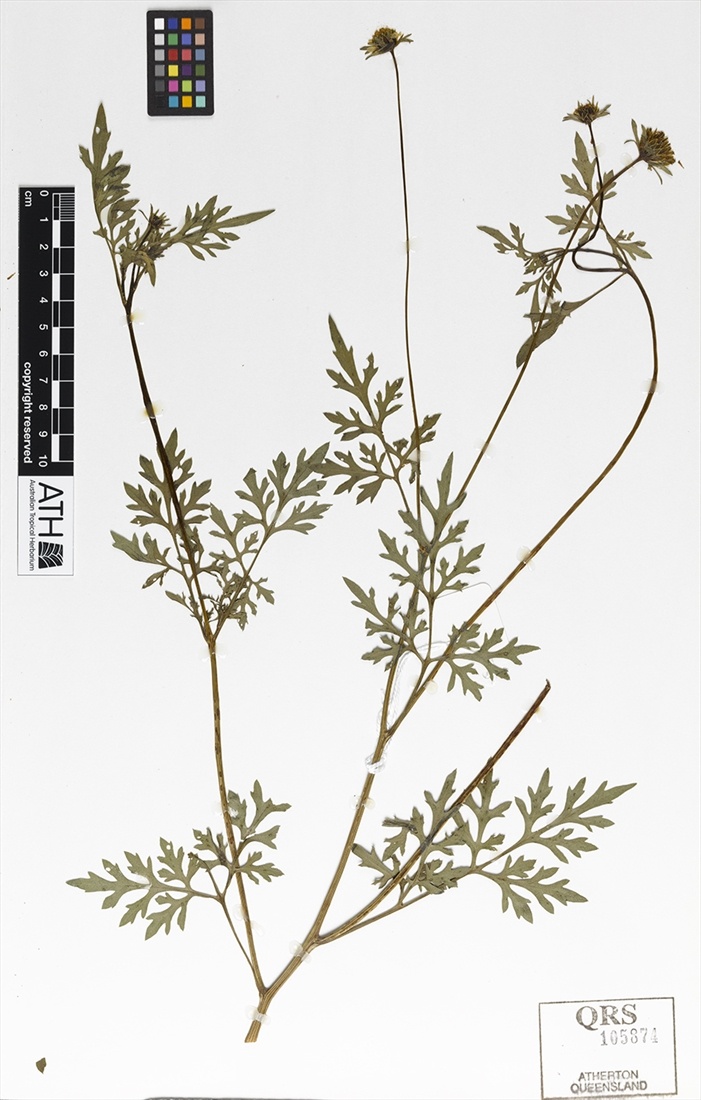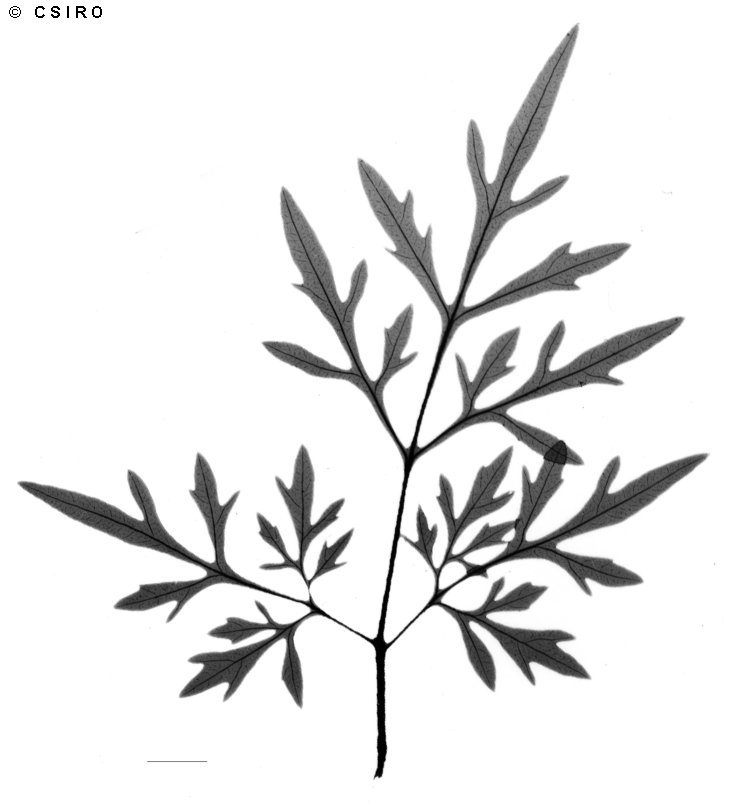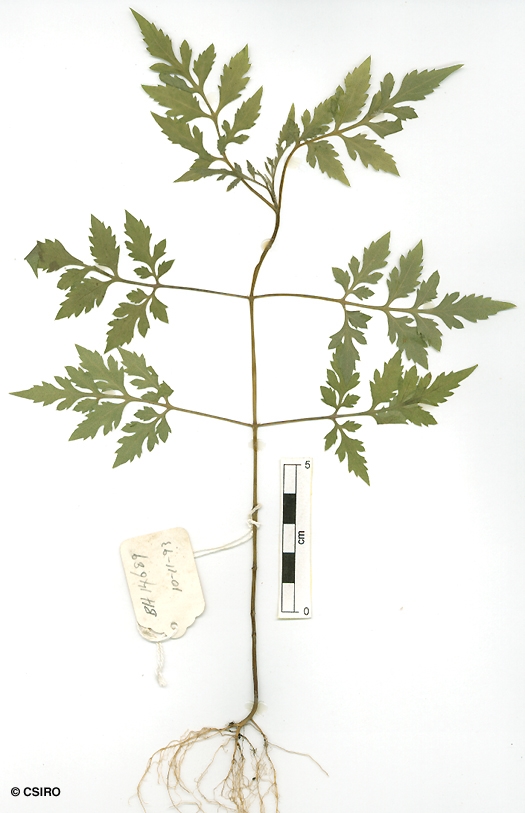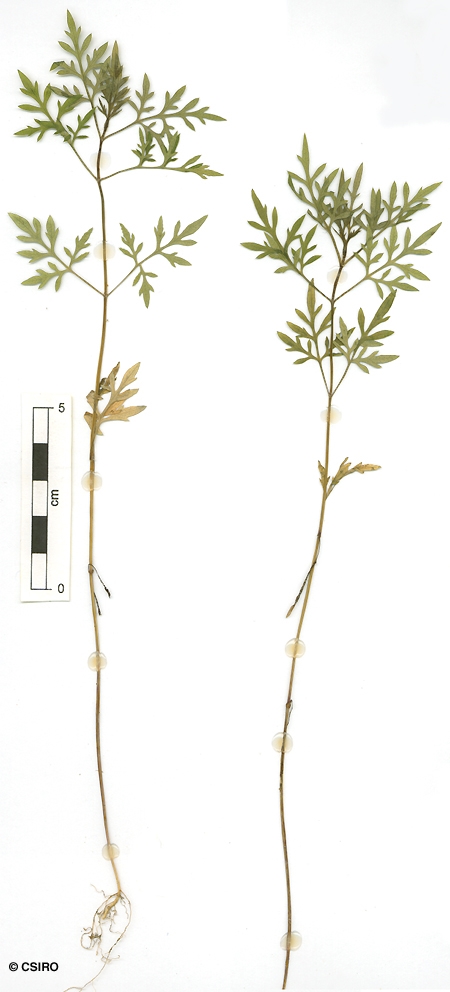Australian Tropical Rainforest Plants - Online edition
Bidens subalternans DC.




Candolle, A.P. de (1836) Prodromus Systematis Naturalis Regni Vegetabilis 5: 600. Type: "in locis cultis circa Bahiam legit cl. Salzmann. .. (v.s. comm. a cl. Salzmann.)".
Greater Beggar's Ticks
Annual herb, but occasionally reaches a shrub of 1-1.5 m tall.
Flowers borne in heads 5-10 mm diam., 30-40 flowers per head. Outer involucral bracts linear to narrowly lanceolate, 4-15(-20) mm long, sometimes dilated at tip, margins ciliate, top side with fine hairs to hairy. Ray florets rudimentary, often absent, yellow; ligule absent.
Each fruit or nutlet ending in 2-3(4) plumes each with downward pointing hairs which adhere to clothes, animal fur, etc. Fruits about 9-26 mm long. Seeds (achenes) about 8-17 mm long. Embryo about 6-8 mm long, cotyledons about 2/3 of the length of the embryo. Cotyledons wider than the radicle.
Each fruit or nutlet ending in 2-3(4) plumes each with downward pointing hairs which adhere to clothes, animal fur, etc. Fruits about 9-26 mm long. Seeds (achenes) about 8-17 mm long. Embryo about 6-8 mm long, cotyledons about 2/3 of the length of the embryo. Cotyledons wider than the radicle.
A cosmopolitan species of originally from South America, now naturalised in WA, NT, CYP, NEQ, CEQ and southwards to north-eastern New South Wales. Altitudinal range from near sea level to 600 m. Grows in monsoon forest, vine thickets and other vegetation types.
Three varieties occur in Australia, see Flora of Australia 37: pages 465-467.





